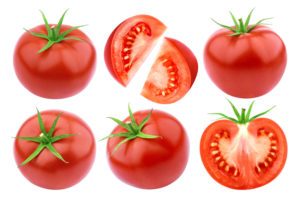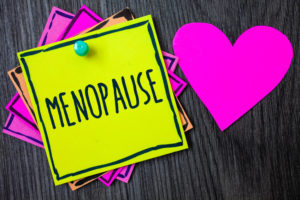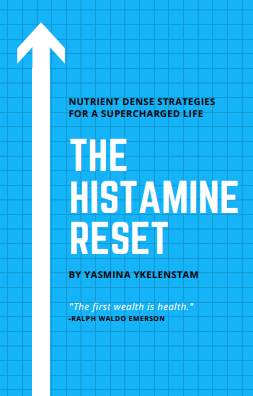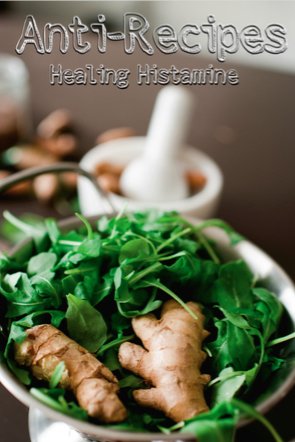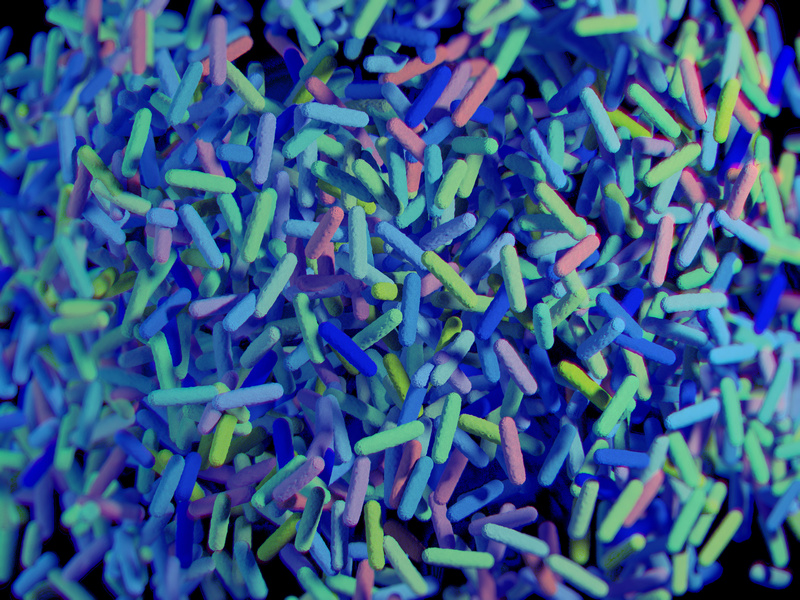
The gut barrier is meant to keep bacteria from our food from crossing into our bloodstream. Histamine, an inflammatory mediator released by mast cells that make up part of the immune system, and also contained in foods, can compromise this barrier, causing intestinal permeability (also known as leaky gut). Foods and bacteria migrating from the stomach to the blood stream are believed to trigger allergies and intolerances, and according to some studies, may contribute to autoimmune symptoms. Probiotics and prebiotic fiber, as well as other mast cell related treatments may be helpful.
A properly working intestinal (gut) barrier protects the body as a whole from invasion by microganisms and toxins we ingest daily. But shut down that barrier too tightly and we may have problems absorbing nutrients and fluids essential to our survival. Overdosing on nutrients, medications and supplements can all affect this delicate balance, leading to inflammatory bowel, celiac, food allergy, as well as obesity and metabolic diseases (of which diabetes is one).
Intestinal permeability/leaky gut is linked to symptoms relating to:
- Allergies
- Asthma
- Autism
- Autoimmune disease
- Eczema and psoriasis
- Inflammatory bowel disease
- Bloating
- Gas
- Heartburn
- Acid reflux
- In checking the UK National Health Service (NHS) website as I sometimes do for more information, I found the following statement:
- “While it’s true that some conditions and medications can cause a “leaky” gut (what scientists call increased intestinal permeability), there is currently little evidence to support the theory that a porous bowel is the direct cause of any significant, widespread problems.”This directly contradicts the numerous studies out there.
-
How histamine and mast cells affect our intestinal barrier and trigger permeability/leaking
- An animal study showed that histamine increased permeability of the intestines. Pre-Treatment with an H1 receptor antagonist (an antihistamine similar to Claritin and Zyrtec for example) didn’t stop this, but an H2 antagonist (a stomach medicine which is also an antihistamine like Zantac/Ranitidine) did prevent the intestinal permeability.
- Researcher from another tells us that Interleukin-9 (released by mast cells) is involved in intestinal permeability/leaky gut, and that this process plays an important role in food allergy.
-
Here’s a four week course & meal plan to take the stress out of healing histamine.
A small sample study on 21 patients with self-reported food allergy and intolerance on an allergen-free diet. Intestinal permeability was diagnosed by a standard test involving the ingestion of a sugar preparation (Lactulose/Mannitol) and their urinary excretion. They found that those with the most severe symptoms had a higher Intestinal Permeability Index.
Some interesting research on co-infections showed that malaria triggered gut “mastocytosis” (which is a mast cell related disorder) and histamine levels temporarily caused gut permeability and the movement of bacteria in an animal model. They were able to to prevent this by using antihistamines.
You can read more about my experiences here and how junk food and emulsifiers found even in organic foods can trigger it here.
Serotonin and histamine act as pro-inflammatory mediators, causing enough permeability to allow the flow of needed nutrients, but not so much that the nasty stuff escapes.
Did you know that maintaining the gut barrier takes up around fourty percent of the body’s energy? That might be why relieving the body of the strain of digestion by fasting, or in my case, a fasting mimicking diet, has been really helpful in managing all my symptoms, but especially anything relating to my tummy. In my case I managed to heal my stomach just through diet and a few carefully chosen supplements (but not probiotics), but we are all different and will need a number of approaches to get the job done.
Probiotics have been found to be helpful, but it’s important to get the right strain.
I refer to my friends over at OptiBac Probitoics for an explanation on why the strain is so important:
“‘Bacteria’ or ‘Yeast’ is a kingdom of organisms, in the same way that humans belong to the ‘Animal’ kingdom. The bacteria can then be separated out into different groups based on similar characteristics, with increasing detail down through the phylum, class, order and family, until the genus level is reached e.g. lactobacillus. Within the genus level is the species level e.g. acidophilus (for humans the equivalent would be Homo sapiens).
Check out this free online workshop on the basics of healing histamine
For many people their knowledge of probiotics stops here, without realising that it gets more detailed, and this detail allows us to find out more about the bacteria. The next step down from the species is the strain level, and there are tens, if not hundreds, of strains within the species L. acidophilus (as there are within any bacterial species) e.g. NCFM®, Rosell-52 etc. The strain name usually consists of numbers and letters which indicate a microbiology institute e.g. NCFM = ‘North Carolina Food Microbiology’ research centre. It’s only at this level that a probiotic can really be judged on its worth, as the strain name points towards the research and the quality of the probiotic1.
Take the example of L. plantarum. In this species the strain CECT 7528 has been shown in scientific research to be especially good at binding onto dietary cholesterol so it cannot be absorbed by the body, whereas the strain CECT 7529 is particularly good at producing propionic acid (a type of short chain fatty acid which helps to decrease cholesterol levels)2. Both of these strains are in the species L. plantarum, but there are subtle, yet significant, differences between them.”
So here are some of the strains that my wonderful research scientist friend Katerina has found that are particularly beneficial for both histamine intolerance and leaky gut/intestinal permeability:
Lactobacillus rhamnosus 19070-2
L reuteri DSM 12246
bifidobacteria infantis (B. infantis) 35624
Additionally, quercetin has been shown to be a very effective gut barrier fixer thanks to it stopping mast cells found in the area from leaking histamine and other inflammatory agents.
—-REFERENCES—-
Bjarnason, Ingvar. “Faculty of 1000 evaluation for Intestinal permeability in patients with adverse reactions to food.” F1000 – Post-publication peer review of the biomedical literature (n.d.): n. pag. Web.
“7 Signs and Symptoms You Have Leaky Gut.” Dr. Axe. N.p., 24 Feb. 2017. Web. 24 Feb. 2017.
Potts, Rashaun A., Caitlin M. Tiffany, Nazzy Pakpour, Kristen L. Lokken, Connor R. Tiffany, Kong Cheung, Renée M. Tsolis, and Shirley Luckhart. “Mast cells and histamine alter intestinal permeability during malaria parasite infection.” Immunobiology 221.3 (2016): 468-74. Web.
Stevens, Richard L. “Faculty of 1000 evaluation for IL-9- and mast cell-mediated intestinal permeability predisposes to oral antigen hypersensitivity.” F1000 – Post-publication peer review of the biomedical literature (n.d.): n. pag. Web.
“Histamine and Histamine Antagonists.” Van Nostrand’s Scientific Encyclopedia (2006): n. pag. Web.
“”Leaky gut syndrome”.” NHS Choices. NHS, n.d. Web. 24 Feb. 2017.
Mortillaro NA, Granger DN, Kvietys PR, Rutili G, Taylor AE. “Effects of Histamine and Histamine Antagonists on Intestinal Capillary Permeability.” American Journal or Physiology. 1981 May;240(5):G381-6.
Bischoff, Stephan C., Giovanni Barbara, Wim Buurman, Theo Ockhuizen, Jörg-Dieter Schulzke, Matteo Serino, Herbert Tilg, Alastair Watson, and Jerry M. Wells. “Intestinal permeability – a new target for disease prevention and therapy.” BMC Gastroenterology 14.1 (2014): n. pag. Web.
“Leaky gut: the mast cell (histamine), Crohn’s disease connection | Healing Histamine.” Healing Histamine | Histamine Intolerance Diet Foods Recipes. N.p., 12 Sept. 2016. Web. 04 Mar. 2017.
“Strain Myth.” OptiBac Probiotics. N.p., n.d. Web. 04 Mar. 2017.
Magistris, Laura De, Valeria Familiari, Antonio Pascotto, Anna Sapone, Alessandro Frolli, Patrizia Iardino, Maria Carteni, Mario De Rosa, Ruggiero Francavilla, Gabriele Riegler, Roberto Militerni, and Carmela Bravaccio. “Alterations of the Intestinal Barrier in Patients With Autism Spectrum Disorders and in Their First-degree Relatives.” Journal of Pediatric Gastroenterology and Nutrition 51.4 (2010): 418-24. Web.
D’eufemia, P., M. Celli, R. Finocchiaro, L. Pacifico, L. Viozzi, M. Zaccagnini, E. Cardi, and O. Giardini. “Abnormal intestinal permeability in children with autism.” Acta Paediatrica 85.9 (1996): 1076-079. Web.





